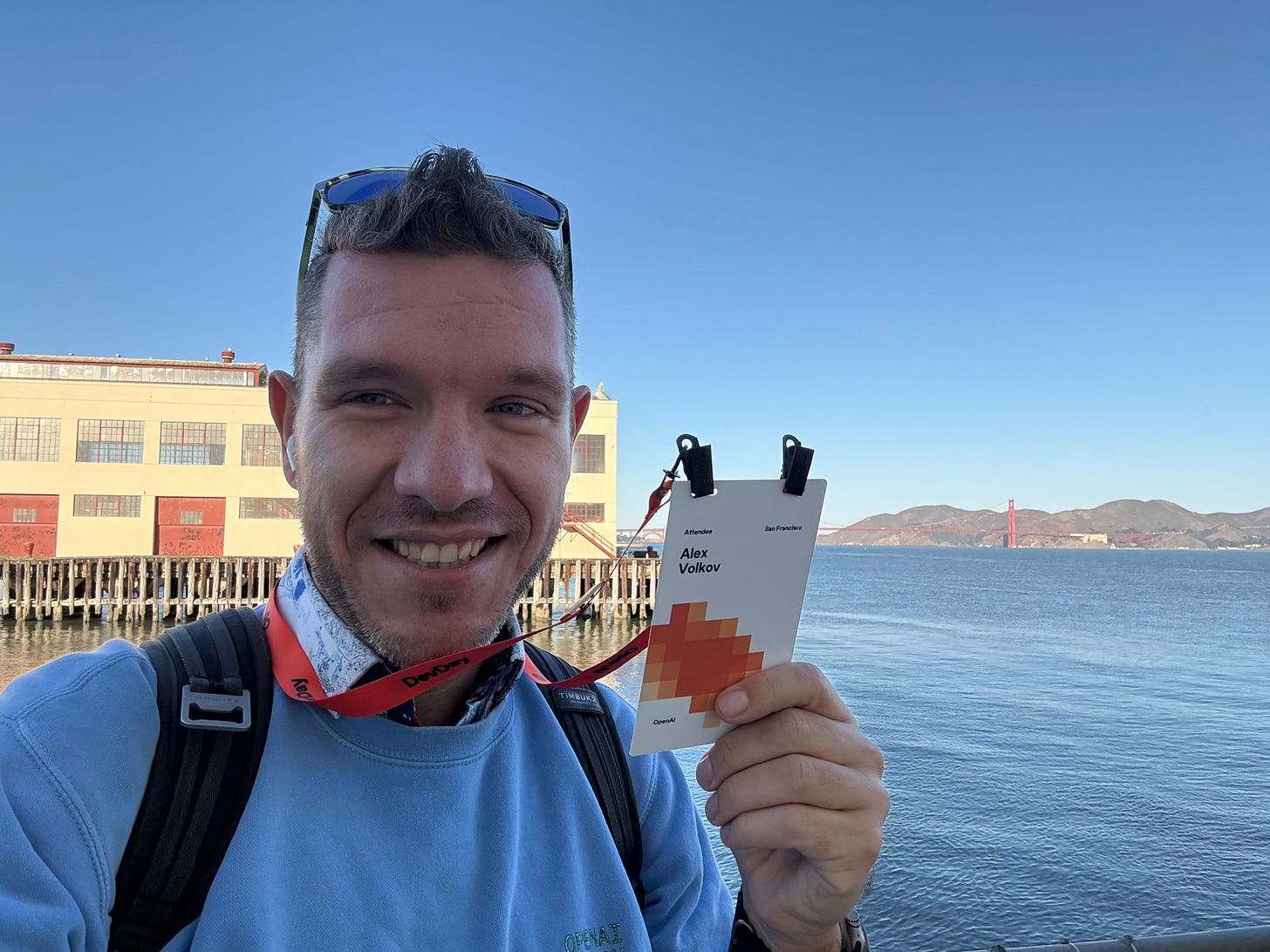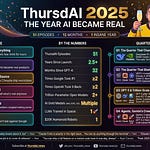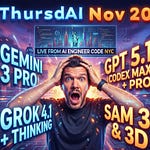Hey, Alex here. Super quick, as I’m still attending Dev Day, but I didn’t want to leave you hanging, I have decided to outsource my job and give the amazing podcasters of NoteBookLM the whole transcript of the opening keynote of OpenAI Dev Day.
You can see a blog of everything they just posted here
Here’s a summary of all what was announced:
Developer-Centric Approach: OpenAI consistently emphasized the importance of developers in their mission to build beneficial AGI. The speaker stated, "OpenAI's mission is to build AGI that benefits all of humanity, and developers are critical to that mission... we cannot do this without you."
Reasoning as a New Frontier: The introduction of the GPT-4 series, specifically the "O1" models, marks a significant step towards AI with advanced reasoning capabilities, going beyond the limitations of previous models like GPT-3.
Multimodal Capabilities: OpenAI is expanding the potential of AI applications by introducing multimodal capabilities, particularly focusing on real-time speech-to-speech interaction through the new Realtime API.
Customization and Fine-Tuning: Empowering developers to customize models is a key theme. OpenAI introduced Vision for fine-tuning with images and announced easier access to fine-tuning with model distillation tools.
Accessibility and Scalability: OpenAI demonstrated a commitment to making AI more accessible and cost-effective for developers through initiatives like price reductions, prompt caching, and model distillation tools.
Important Ideas and Facts:
1. The O1 Models:
Represent a shift towards AI models with enhanced reasoning capabilities, surpassing previous generations in problem-solving and logical thought processes.
O1 Preview is positioned as the most powerful reasoning model, designed for complex problems requiring extended thought processes.
O1 Mini offers a faster, cheaper, and smaller alternative, particularly suited for tasks like code debugging and agent-based applications.
Both models demonstrate advanced capabilities in coding, math, and scientific reasoning.
OpenAI highlighted the ability of O1 models to work with developers as "thought partners," understanding complex instructions and contributing to the development process.
Quote: "The shift to reasoning introduces a new shape of AI capability. The ability for our model to scale and correct the process is pretty mind-blowing. So we are resetting the clock, and we are introducing a new series of models under the name O1."
2. Realtime API:
Enables developers to build real-time AI experiences directly into their applications using WebSockets.
Launches with support for speech-to-speech interaction, leveraging the technology behind ChatGPT's advanced voice models.
Offers natural and seamless integration of voice capabilities, allowing for dynamic and interactive user experiences.
Showcased the potential to revolutionize human-computer interaction across various domains like driving, education, and accessibility.
Quote: "You know, a lot of you have been asking about building amazing speech-to-speech experiences right into your apps. Well now, you can."
3. Vision, Fine-Tuning, and Model Distillation:
Vision introduces the ability to use images for fine-tuning, enabling developers to enhance model performance in image understanding tasks.
Fine-tuning with Vision opens up opportunities in diverse fields such as product recommendations, medical imaging, and autonomous driving.
OpenAI emphasized the accessibility of these features, stating that "fine-tuning with Vision is available to every single developer."
Model distillation tools facilitate the creation of smaller, more efficient models by transferring knowledge from larger models like O1 and GPT-4.
This approach addresses cost concerns and makes advanced AI capabilities more accessible for a wider range of applications and developers.
Quote: "With distillation, you take the outputs of a large model to supervise, to teach a smaller model. And so today, we are announcing our own model distillation tools."
4. Cost Reduction and Accessibility:
OpenAI highlighted its commitment to lowering the cost of AI models, making them more accessible for diverse use cases.
Announced a 90% decrease in cost per token since the release of GPT-3, emphasizing continuous efforts to improve affordability.
Introduced prompt caching, automatically providing a 50% discount for input tokens the model has recently processed.
These initiatives aim to remove financial barriers and encourage wider adoption of AI technologies across various industries.
Quote: "Every time we reduce the price, we see new types of applications, new types of use cases emerge. We're super far from the price equilibrium. In a way, models are still too expensive to be bought at massive scale."
Conclusion:
OpenAI DevDay conveyed a strong message of developer empowerment and a commitment to pushing the boundaries of AI capabilities. With new models like O1, the introduction of the Realtime API, and a dedicated focus on accessibility and customization, OpenAI is paving the way for a new wave of innovative and impactful AI applications developed by a global community.












